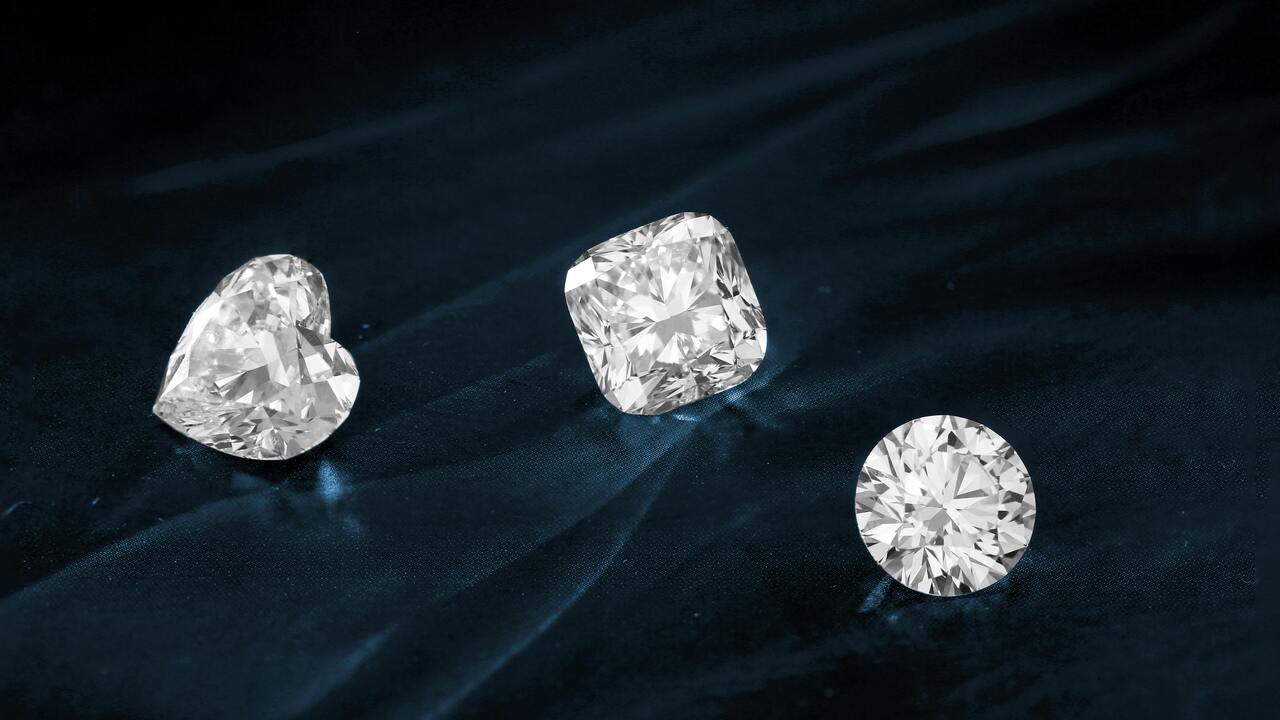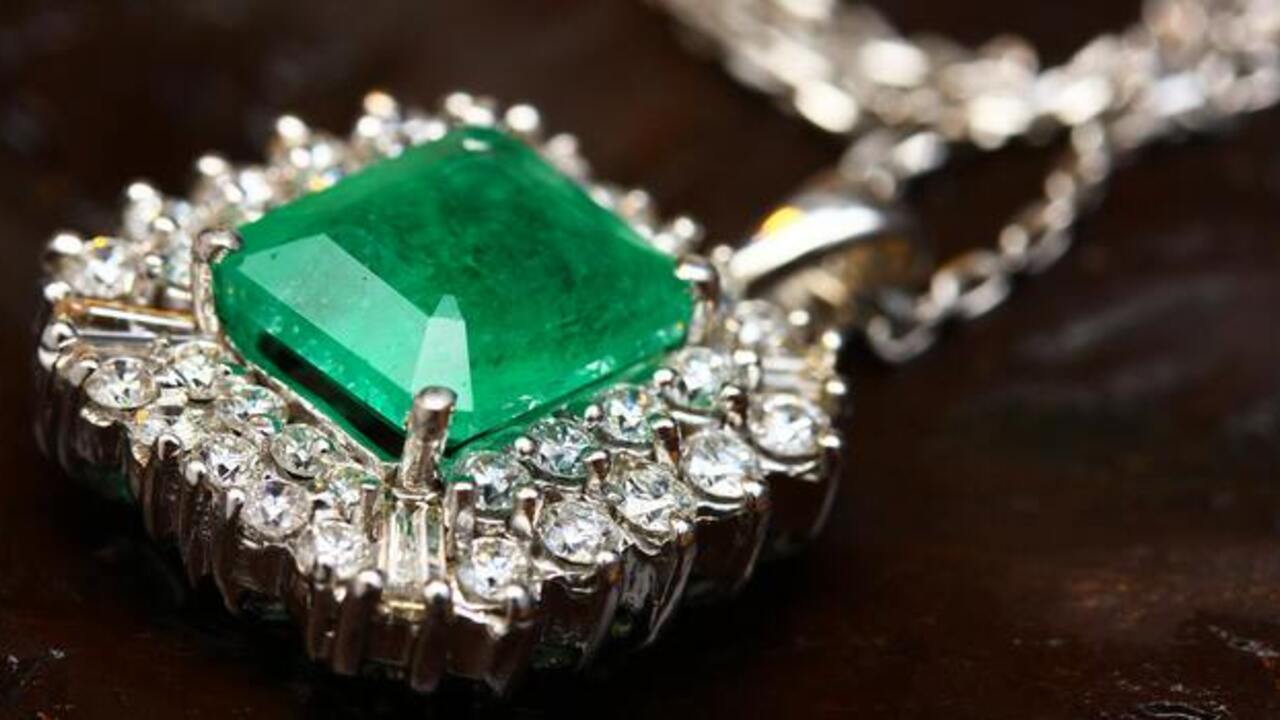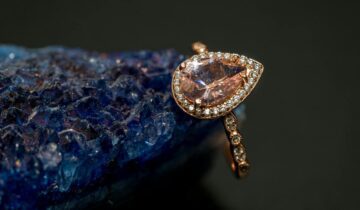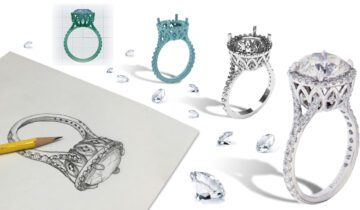Diamond engagement rings, necklaces, earrings, and everything related to diamonds began in India with the discovery of diamonds in the 4th century BC. They were transported through the trade routes connecting India and China, the route we know today as the Silk Road. In its early days, diamonds were valued for their strength and ability to engrave on metal. Some also believed that diamonds had therapeutic properties and could heal people when digested. Diamonds were considered an adornment, and it was believed that they could repel evil and provide protection during battle.
The use of rings as a symbol of commitment began in Roman civilization, which gave rise to the concept of betrothal rings. The betrothal rings were a sign of friendship and did not always mean the right to marriage. This is also where the ritual of putting engagement rings on the left hand’s third finger originated. The Romans believed that a vein from the third finger ran directly to the heart.
In this post, I will explain the history of Diamonds and how they are formed. Then, we’ll learn why they were considered an ancient treasure. Finally, I will tell you why diamonds are an elegant incarnate of gemstones.
History Of Diamonds: How are they formed and extracted?
As we have already established, diamonds were discovered in India in the 4th century BC. Still, the actual process of diamond formation began long before that—three billion years ago, to be precise. For comparison, the last known Mammoths were alive until 1650 BC, a thousand years after the pyramid of Giza was built.
Diamonds were formed deep within the earth’s crust under extreme conditions. Intense heat and pressure causes carbon atoms to crystalize, forming a diamond. Diamonds are mainly formed 150 – 200 KM under the earth’s surface. Now, you may wonder, how are they extracted if they are formed deep below the surface? The answer is that diamonds may be formed hundreds of KM below the surface, but they slowly move towards the surface thanks to volcanic eruptions.
Volcanic eruptions happen when the gas deep below the surface gets hot and starts expanding and rising. When this happens, the stones and diamonds trapped near the gas also start making their way towards the earth’s surface. From here, the extraction process starts. Open-pit mining is the most common method of diamond extraction. In this method, the upper layer of soil and rocks, called the overburden, is removed. This exposes the diamond-bearing layer, which is at a depth of 50 – 100 meters. Diamonds are then extracted from this layer by excavating.

History of Diamond Engagement Rings
We have already briefly discussed betrothal rings and how they did not always mean the promise of marriage. This all changed when Pope Innocent III, an influential Pope during the Middle Ages, declared a waiting period before the marriage ceremony. This added to the value of engagement rings; these rings were now considered a sign of commitment. Only the royalty was allowed to wear rings with jewels; this made the diamond ring an ornament for the royalty and not for ordinary people.
The very first recorded incident of a diamond engagement ring happened in 1477 when the Archduke of Austria, Maximillian, proposed to Mary of Burgundy using a diamond ring. Even though engagement rings were quite common then, the diamond enjoyed the title “King of the gemstones.”
Diamond’s name is taken from the Greek word adamas, which means “unconquerable” or “unbreakable.” It was adequately attached to marriage as love was considered powerful and unbreakable. This contributed to the popularity of diamond rings as engagement rings, symbolizing everlasting union.
Resurgence of Diamonds: Elegance Incarnate
An Englishman named Cecil John Rhodes formed a company, De Beers Consolidated Mines, LTD, to control the demand and supply of diamonds. He was successful initially, but the demand for the stone depleted gradually. The demand for diamonds devalued by 50% in 1919.
In 1947, De Beers employed the services of a leading marketing agency, N.W Ayer. This led to the creation of the slogan “A Diamond is forever.” The idea behind this marketing campaign was to suggest that diamonds should be the only choice for engagement rings. This De Beers campaign proved so successful that we continue to embrace the idea of a diamond ring for engagement. The fact that more than 78% of engagement rings sold in today’s fine jewelry market contain diamonds shows the marketing campaign’s success.
With the increase in popularity of diamond engagement rings, many companies began to educate consumers on what to look for when selecting a diamond ring. With jewelers experimenting to enhance the visual appeal of the diamond, new cutting techniques were deployed. This led to the emergence of various popular varieties, such as oval, marquise, square, and rectangular.
Summing Up
Diamonds were historically considered precious due to myths surrounding them. Some considered them therapeutic, some thought they could repel evil, and some thought they provided protection during battle. The Romans popularized the idea of engagement rings when Pope Innocent III made a waiting period mandatory between the betrothal and the marriage. The first instance of the diamond engagement ring was recorded in 1477 when the Archduke of Austria proposed to Mary or Burgundy using a diamond ring. The demand for diamond rings rose with the idea that “A diamond is forever,” and so is the union between two lovers.





 No products in the cart.
No products in the cart.